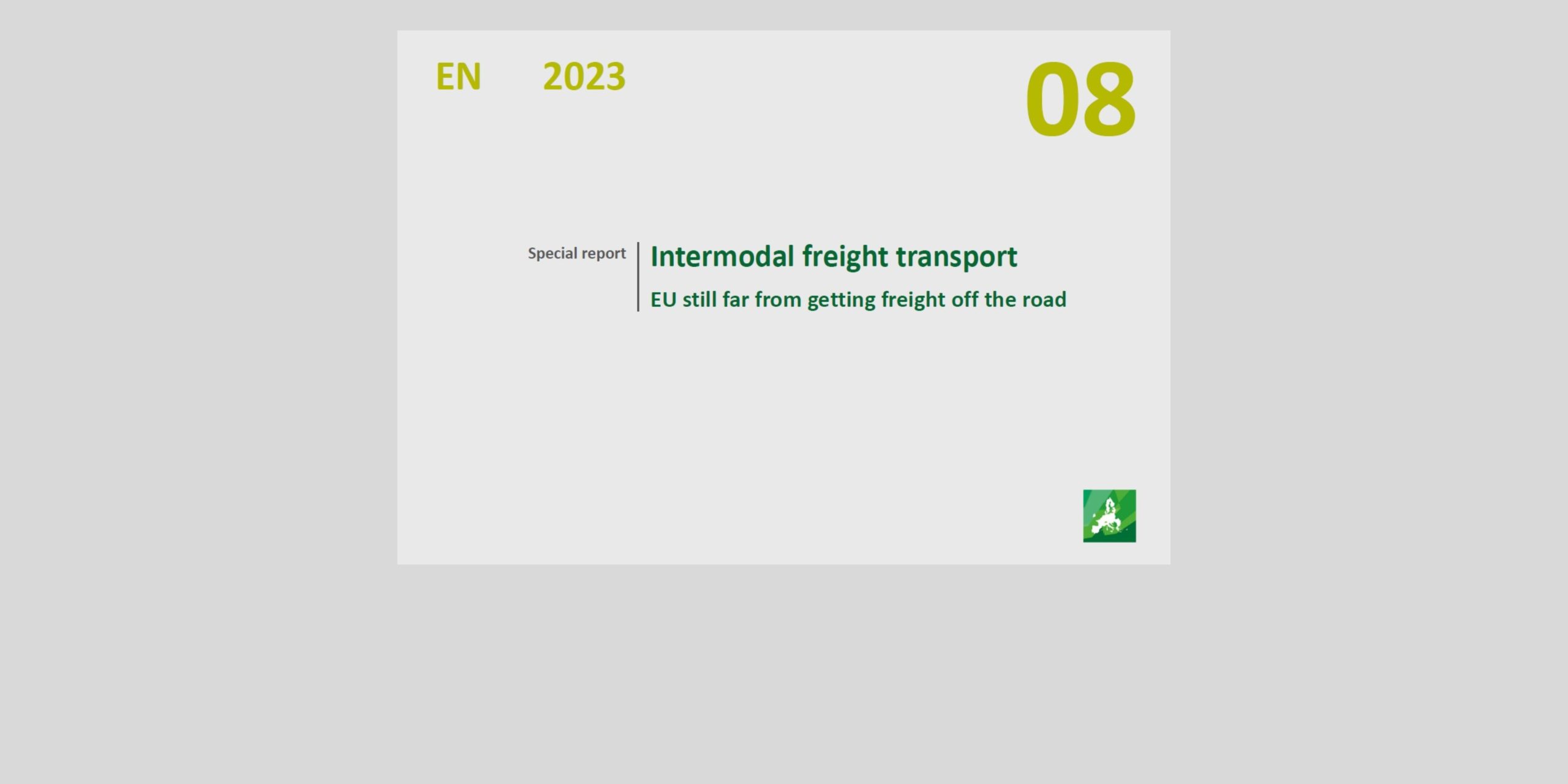According to a report published by the European Court of Auditors (ECA) on the 27 of March 2023, intermodal freight transport in the EU still has a long way to go: trains and barges cannot currently compete on an equal footing with trucks. Despite efforts to move freight off the road, it has failed to remove the regulatory and infrastructure barriers that adversely affect other modes of transport. These issues need to be addressed if the EU is to achieve its green ambitions.
Road transport is the most flexible and often the fastest and cheapest way to deliver goods. It is, therefore, not surprising that three-quarters of goods in the EU are still transported by road. However, trucks are major polluters. A shift to transport options other than road and more intensive use of other modes of transport, such as rail or inland waterways, can play a key role in the greening of freight transport. To bring about this change, the EU has committed €1.1 billion between 2014 and 2020 to projects supporting intermodality.
“Decarbonising transport is at the heart of the EU’s goal to reduce greenhouse gas emissions, as set out in the European Green Deal,” said Annemie Turtelboom, the ECA Member who led the audit. “Although intermodality is an essential tool in this respect, freight transport in the EU is not on the right track.”
The auditors found that no specific EU strategy had been established for intermodal freight transport. Rather, intermodality is part of broader strategies for the greening of freight transport, which set specific quantitative targets for increased use of rail and inland waterways. But as these targets are non-binding, different EU countries have set their own targets.
These national targets are not necessarily comparable and in line with EU targets. It is, therefore, impossible to assess whether combined national efforts are sufficient to achieve the overall EU objectives in terms of modal shift (moving transport from road to transport by rail or ship). In any case, the EU targets for 2030 and 2050 (i.e. doubling rail traffic and increasing waterway use by 50%) are simply unrealistic, according to the auditors.
The auditors also state that some EU rules make intermodal transport less attractive. The Combined Transport Directive, the current version of which was adopted in 1992, is outdated and ineffective. For example, there is a requirement that a paper document stamped by the railway or port authorities must be present throughout the journey instead of a digitized workflow. The European Commission has made several attempts to revise the directive, but it has not been able to get the agreement of the member states.
At the same time, other provisions of EU legislation, in the field of road transport, sometimes go against the objective of promoting intermodality. Capacity management and interoperability problems are likely to persist if no new legislative action is taken. Examples include issues related to slot scheduling for rail freight, priority rules for passenger versus freight trains, or language requirements for train drivers.
The auditors also point to delays experienced by EU countries in ensuring compliance of the infrastructure with the technical requirements of EU legislation. For example, using longer trains with a European standard length of 740 meters would be one of the improvements with the highest cost-effectiveness to compete with road transport. However, such trains could in theory only be used on half of the core corridors of the trans-European transport network (TEN-T).
The lack of information on intermodal terminals and network capacity prevents shippers and logistics operators from offering good intermodal transport solutions to their customers. The proposed revision of the TEN-T regulation could improve the situation. However, the auditors conclude that the EU freight transport network in its current form is simply not yet suitable for intermodality.
For more information, please see the Court of Auditors report on intermodal freight transport here.

